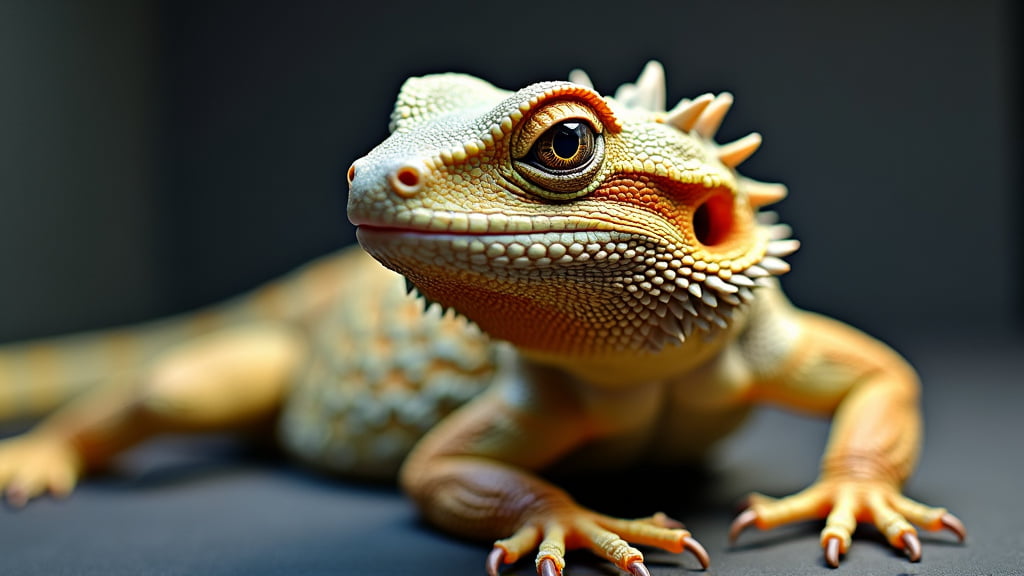Creating the Perfect Environment
When it comes to bearded dragons, ensuring they have the proper lighting isn’t just a luxury—it’s a necessity. As an exotic pet enthusiast who has spent years nurturing a variety of reptiles, I can attest that the right lighting setup is crucial for their health and well-being. In this post, we’ll explore DIY lighting solutions that will help you provide an optimal environment for your scaly friend.
Understanding Bearded Dragon Lighting Needs
The Importance of UVB Lighting
One of the primary needs of a bearded dragon is access to UVB light. UVB rays are essential for the synthesis of Vitamin D3, which in turn aids in calcium absorption. Without adequate UVB lighting, bearded dragons can suffer from metabolic bone disease, which is often fatal.
- Long-tail keywords: bearded dragon UVB lighting setup, importance of UVB for reptiles
The Role of Heat Lamps
Another critical component is the heat lamp. Bearded dragons are ectothermic, meaning they rely on external heat sources to regulate their body temperature. A consistent heat gradient in their habitat helps in digestion and overall metabolic function.
- Long-tail keywords: bearded dragon heat lamp DIY, creating a heat gradient for reptiles
DIY Lighting Solutions
Choosing the Right Bulbs
UVB Bulbs
When creating a DIY lighting setup, selecting the right UVB bulb is paramount. Fluorescent tubes and compact fluorescent bulbs are commonly used options. I’ve had great success using the Reptisun 10.0 UVB tube in several of my enclosures. It provides enough UVB coverage without being too intense.
Internal Link: Essential Bearded Dragon Supplies
Heat Lamps
For the heat lamp, a halogen floodlight from your local hardware store can be an effective and economical choice. Ensure it has the appropriate wattage to achieve the desired basking temperature (usually 35-40°C for basking spots). Implementing a thermostat will help to keep this temperature consistent.
Product Link: Reptile Systems Heating and Lighting
Setting Up the Enclosure
Positioning the Lights
For effective UVB exposure, position the UVB bulb about 30-45 cm away from the basking spot. It’s wise to place the UVB and heat lamps next to each other, creating a primary basking zone.
- Set the heat lamp on one end of the enclosure to create a thermal gradient.
- Position the UVB bulb to cover the primary basking area effectively.
Mounting and Safety Precautions
Securely mount your bulbs using appropriate fixtures or even DIY mounts:
- DIY Tube Light Mount: Use zip ties to affix fluorescent tubes to a wire mesh top.
- Heat Lamp Mount: Hardware stores sell clamp lamps, which can be screwed onto the side of the tank for stability.
It’s crucial to check the temperature regularly with a reliable thermometer and use a timer to mimic natural daylight cycles (usually 12 hours on, 12 hours off).
Cost-effective Alternatives
Recycled Materials
Using recycled or repurposed items can significantly cut down costs. Old desk lamps can be converted into reliable heat sources. Just make sure they can withstand continuous use and high temperatures.
- Place a ceramic heat emitter into a repurposed lamp for a safe and all-night heating solution.
- Reflector domes can often be picked up at second-hand shops for a fraction of the cost.
DIY Reflectors
Reflectors enhance the efficiency of your lamps by directing more light and heat into the enclosure. Aluminium foil attached to cardboard makes an excellent DIY reflector. Just ensure all materials used are heat-resistant to avoid any fire hazards.
Monitoring and Maintenance
Regular Checks
Regularly inspect the performance of your DIY setup. Dust and debris can affect light output and the efficacy of UVB bulbs declines over six months to a year, even if they’re still shining brightly.
Seasonal Adjustments
Be aware of your ambient room temperature, which changes with the seasons. Adjust your setup to ensure that the enclosure maintains a constant environment. This might involve swapping out bulb wattages or increasing the duration of the heat lamps.
Conclusion
Creating a DIY lighting setup for your bearded dragon is a rewarding project that can enhance the quality of life for your pet. By understanding their lighting needs, choosing the right materials, and performing regular maintenance checks, you can ensure a healthy and happy environment for your reptile companion.
For more in-depth guides and bearded dragon care tips, check out other articles on our blog. And remember, if you notice any health issues, consult a vet experienced in reptile care immediately.
**Meta Description:** Discover how to create an effective DIY lighting setup for your bearded dragon. Explore expert tips and practical advice for choosing bulbs, setting up the enclosure, and maintaining optimal conditions.
Internal Link: Comprehensive Guide to Bearded Dragons
By following these guidelines, you’ll not only save money but also ensure your bearded dragon thrives in a well-lit, healthy habitat. Happy DIY-ing!

